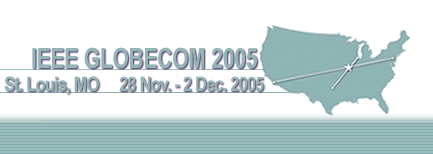GLOBECOM 2005 Tutorial
CANCELLED
Monday, 28 November
Majestic Ballroom G / Level Two / Renaissance Grand Hotel
Title: TU 09 DWDM Technology in Communications
Duration: Half Day/2:00PM-5:00PM
Instructor: Stamatios Kartalopoulos, The University of Oklahoma, USA
Abstract:
This is a one day short-course on DWDM optical networks, devices and technology.
It consists of five major units:
• Optical and photonic concepts that will help to understand the work ings of devices used in DWDM technology; including are the dual nature of light, refraction, diffraction, interferometry, holography, lin ear and non-linear optical medium properties, propagation of light in optical medium, loss, scattering, dispersion, polarization, polarization dispersion loss, four wave mixing, and many others.
• Description of key photonic passive and active devices; including are filters, gratings, multi-mode and single-mode fibers, FBGs, polarizers, phase shifters, modulators, optical amplifiers (EDFA, Raman, SOA), optical switches, wavelength conversion, lasers (VCSEL, DBF, FP), and receivers.
• The DWDM and CWDM channel grid and its characteristics accord ing to ITU-T standards, including applicability.
• Transmission impairments and noise sources that affect the quality of the signal, BER and OSNR and ramification strategies for disper sion compensation, polarization compensation, equalization and more.
• Optical topologies, optical networks, access (including FTTx, metro (small, medium, large), mesh, and point-to-point with add-drop). In addition, this part includes system design, network protection strate gies, survivability, static and dynamic switching, routing and wave length assignment.
• Introduction to next generation optical networks such as "Next- Generation SONET" and "Optical Transport Network". The course is supported by notes and optionally by four books authored by the instructor (published by IEEE/Wiley): "Introduction to DWDM Technology" (2001), "DWDM: Networks, Devices and Technology" (2003), "Next generation SONET/SDH" (2004), and "Optical Bit Error Rate" (2004).






















